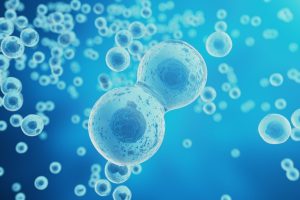Imaging single proteins has been a long-standing ambition for advancing various fields in natural science. For instance, structural biology, biophysics, and molecular nanotechnology. In particular, revealing the distinct conformations of an individual protein is of utmost importance. The past 20 years have witnessed the advent of numerous technologies to specifically and covalently label proteins in cellulo and in vivo with synthetic probes.
A comprehensive understanding of cellular systems, whether in neuroscience or other areas of cell biology requires an understanding of the interactions between proteins in real-time and in their native environments. Classical imaging provides one window into this problem by determining structural interactions between elements of the cell. Along with that, various approaches are being applied in vitro to determine rates and properties of molecular interactions. However, there is still a substantial lack of knowledge into the relationships between protein-protein interactions, their structure and inclusion into molecular machines, as well as the effects of their integration within the cellular environment. This is particularly true if proteins are membrane bound or trans-membrane.
Various methods to measure protein-protein interactions suffer from three severe limitations. Firstly, interactions occur at microsecond rates, but traditional binding approaches often give no kinetic information at all. Secondly, almost all binding reactions are performed in vitro and typically in an aqueous environment; however, many such interactions occur in membrane environments. And thirdly, it is hard to translate findings in vitro to those obtained in vivo in live cells undergoing synaptic modulation.
A tool for single-molecule imaging must allow for observing an individual protein long enough to acquire a sufficient amount of data to reveal its structure without altering it. The strong, inelastic scattering cross-section of high-energy elections as used in the state-of-the-art aberration-correction transmission electron microscope (TEMs) inhibits accumulation of sufficient elastic scattering events to allow high-resolution reconstruction of just one molecule before it is destroyed. The recent invention of direct detection cameras has dramatically pushed forward the effort in single-particle imaging. This technical innovation radically improves the signal-to-noise ratio for the same electron dose in comparison with a conventional charge-coupled–device camera coupled to a scintillator, a crucial aspect when imaging low atomic number and beam-sensitive material.
Equipment such as this requires precision lens design. UKA offers a team of engineers that will work with you to see that your exact specifications are met when in need of such state-of-the-art medical equipment.
In addition, progress in fields such as super-resolution microscopy and genome editing have either provided additional motivation to label proteins with advanced synthetic probes, or removed some of the difficulties of conducting such experiments. By focusing on two particular applications, live-cell imaging and the generation of reversible protein switches, the opportunities and challenge of the field and how the synergy between synthetic chemistry and protein engineering will make it possible to conduct experiments that are not feasible with current conventional approaches.
Universe Kogaku designs and manufactures optical lenses for state-of-the-art medical equipment, security, high tech and electronic applications. We stock 1000’s of standard lens assemblies and can custom design a solution for scanners, CCTV, CCD/CMOS, medical imaging, surveillance systems, machine vision and night vision systems.